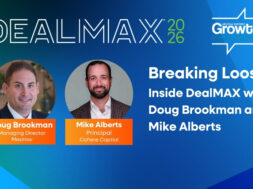The Rise of Dividend Recapitalizations
Configure Partners explores why dividend recapitalizations have become a preferred solution for longer-tenured investments

It is no secret that the M&A landscape has remained reluctantly muted, with the unfavorable interest rate environment and stubborn inflationary pressure contributing to the slowdown. Accordingly, the exit landscape for private equity sponsors remains highly challenged, leaving firms to seek alternative strategies to satisfy LP pressure for the return of capital. As a result, dividend recapitalizations have quickly become a preferred solution for longer-tenured investments, in addition to continuation vehicles and secondary funds.
Year-to-date, PE exit activity aligns with the stifled exit rates that began to appear in early 2022—while the number of exits per quarter in 2020 and 2021 hovered between 400 to 600, exits since Q1 2022 have only averaged around 300 per quarter. As Pitchbook notes in its Q1 PE Breakdown, not since the crisis of 2001 and 2002, and then subsequently in 2008 and 2009, has M&A volume declined in back-to-back years. Due to sluggish exit rates, PE portfolio companies are aging, having been held by their PE firms for a median period of 4.1 years—which is quickly extending beyond the last five-year average of 3.9 before exit.
Dividend recapitalizations have quickly become a preferred solution for longer-tenured investments, in addition to continuation vehicles and secondary funds.
Factors such as a downturn in M&A activity (spanning over eighteen months now), a difficult market environment to realize favorable valuations and the need to return capital to LPs from older vintage year portfolio companies have created a pressure cooker for PE professionals today. To manage LPs who may be tapping their feet for a return on investment, dealmakers have begun turning to dividend recapitalizations as an alternative solution.
Digging Deeper
A dividend recapitalization occurs when a company takes on new debt in order to pay dividends to private investors or shareholders. The most successful dividend recapitalizations tend to be in support of portfolio companies with a sponsor hold period of 3 to 5 years. Typically, these are “pre-exit” transactions implemented to return capital to LPs and refresh the capital structure, with the intent to sell the business in the following 12 to 24 months when the market evolves and valuations recover.
In the past, many sponsors have been hesitant to execute a dividend recapitalization, as it could be viewed as prioritizing the best interest of the investor ahead of the company and its key stakeholders. However, lackluster M&A market conditions have pushed private equity professionals to seek out this opportunity for interim realization in order to attend to their LP base and mitigate risk exposure related to the return of capital. To put a finer point on the trend, 2024 dividend recapitalization activity has exceeded that of the same period from 2021—which, as we all know, was a frenzied year for the capital markets. Dividend recapitalization institutional loan volume for 2024 sits at nearly $30B as of April 17, while 2023 barely broke $5 billion for the entire year.
Looking to the Future
White-hot dividend recapitalization activity is anticipated to persist for at least another quarter. However, a determining factor that could eventually rebalance the scales is a sudden resurgence in new M&A activity—an undeniably positive turn of events that would subsequently inundate the market with LBO financings and divert lender attention away from dividend recapitalization transactions.
However, it remains to be seen whether the PE community will be able to shake the dust off and break the backlogged dam that has become 2024 exit activity.
Configure Insights
As PE professionals look to dividend recapitalizations as a solution, it is essential to remember that not all lenders will participate in such a strategy. Working with an experienced advisor deeply entrenched in the market inherently provides in-depth knowledge of the right lender universe to approach at the right time.
Configure Partners currently has several dividend recapitalization transactions in the market. Should the above article have sparked any questions about or interest in pursuing this strategy, feel free to reach out to one of our bankers or visit our website at configurepartners.com.
Connor Barth is Director, Configure Partners.
Middle Market Growth is produced by the Association for Corporate Growth. To learn more about the organization and how to become a member, visit www.acg.org.


